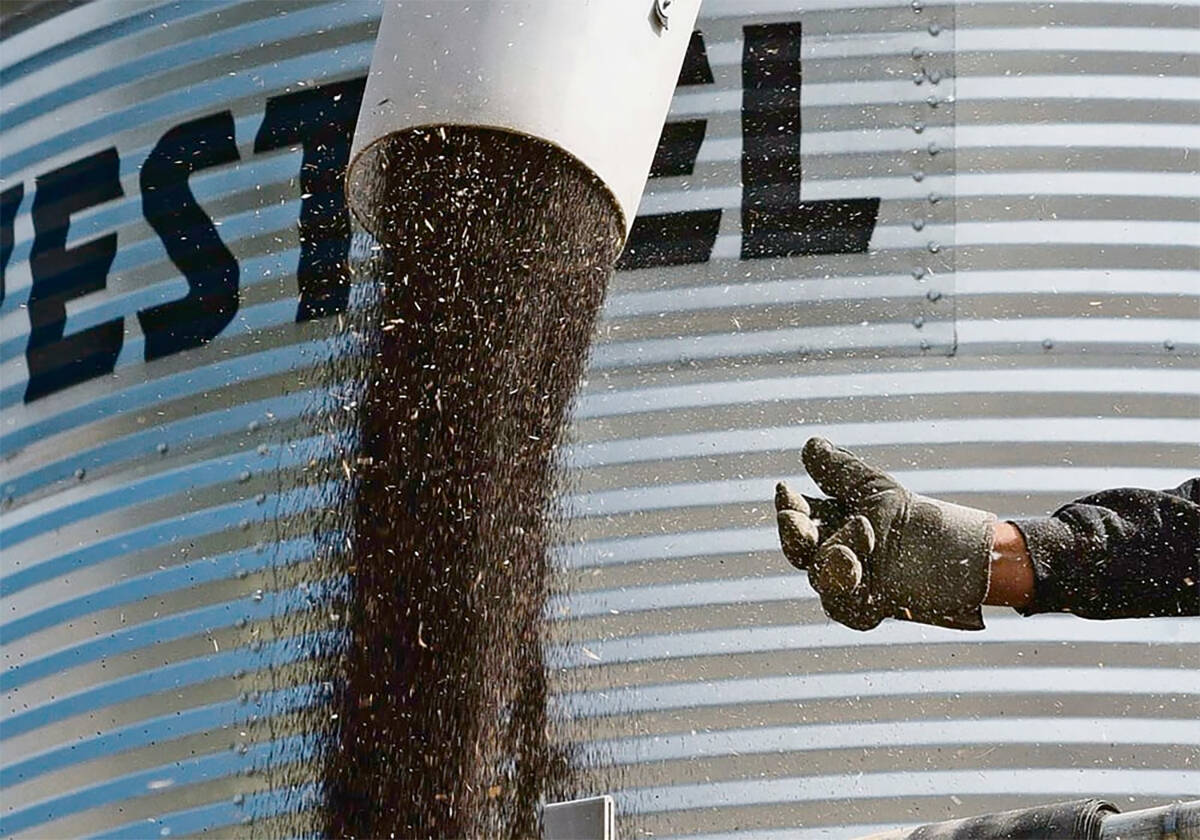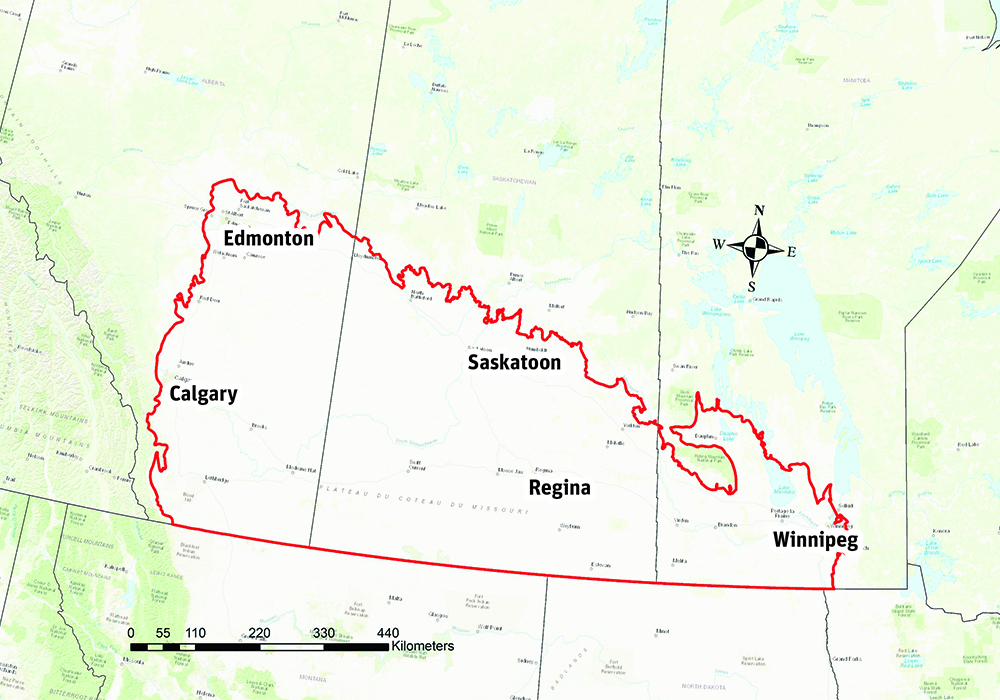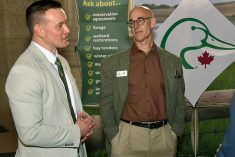New tool from Ducks Unlimited Canada is designed to help Prairie producers make conservation management decisions
Glacier FarmMedia – Leaving even 20 per cent of a field wild could help conserve more than 70 per cent of native species in a region, says Ducks Unlimited Canada, and that biodiversity could bring agricultural benefit to farmers.
The data comes courtesy of a new tool in the organization’s conservation toolbox. The Prairie Biodiversity Mapping and Assessment computer program features an interactive map that displays biodiversity by area, along with a module that predicts how changes to those biodiversity levels would affect the landscape.
“By protecting a small amount of natural habitat, you have a big benefit that you can give to local species diversity,” said James Paterson, lead author of the research project.
Read Also

Farmers urged to be grain-safe this fall
Working around grain bins comes with risk, from farmers falling to drowning in grain: Experts have five tips to help avoid grain-related accidents this harvest.
Users can input location, climate and land cover information to model the biodiversity situation. They can run scenarios, including probable results of conservation or restoration programs on specific sites, and get recommendations for improvements.
Information could include expected biodiversity gains and other benefits, given a particular shift in practices, and indicate which wildlife species would be most likely to benefit, Paterson said.
“We used both public and private data sets of species observations, 1.2 million observations, and combined that with information on the habitat and climate of different places in the Prairies. And we built species distribution models that predict where each species occur …
“When we stack those together, each of those species models, we get a prediction of biodiversity across this big space and we can start to ask questions about how can we predict where (a) species occurs, what are the biggest threats and opportunities for biodiversity conservation.”
Ducks Unlimited Canada hopes to have the tool publicly accessible in less than a year.
“Biodiversity is basically the basis of all (of) what we call ecosystem services, which are just the benefits that society receives from natural systems,” Paterson said.
Those benefits include flood mitigation, resilience against climate change and improvements to water quality.
“I think of it more like a tapestry or a wall,” Paterson said. “And so, as you take bricks out and you’re losing species, the integrity of that wall decreases and the function decreases. But the more complete that wall is, the better it can serve its function.
“And so, the loss of any individual species might not have a large effect on ecosystem services, but supporting many species we know is beneficial for the overall picture.”
It also “gives numbers to credit farmers with work they’re already doing,” he added, noting many producers have naturalized areas on their land but may not know the benefits that those areas provide.
Paterson said the numbers support the value of the often contentious conservation easement mechanism. The tool’s numbers show that land under an easement agreement has 39 per cent more species than unprotected sites nearby.
“This was really exciting because it’s showing that a conservation program that Ducks Unlimited Canada is delivering has really tangible benefits, not just for ducks, but for many other species that live in that region.”
While beneficial for wildlife, conservation easements are not as popular with farmers. Producers often argue that conservation easement payments fall far short of the opportunity costs they incur by not farming that land more intensively.
















